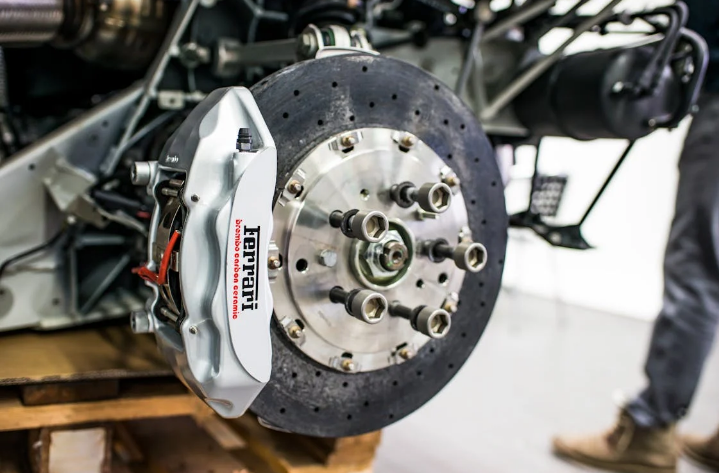Rising repair costs make proactive maintenance a smart investment for any vehicle owner. Advanced maintenance extends a vehicle’s lifespan, enhances safety, and preserves resale value while keeping it visually appealing. This article highlights practical techniques beyond basic upkeep, from engine care and braking systems to visibility enhancements and interior preservation. Implementing these practices thoughtfully helps your car perform better, look cleaner, and remain reliable for years.
Keeping the Engine in Top Shape
Engine longevity depends on regular, thorough care. Follow the manufacturer’s recommended oil change schedule and use the correct grade of oil to ensure proper lubrication and reduce internal wear. Replace air and fuel filters at specified intervals to maintain combustion efficiency and protect fuel injectors and sensors. Periodically clean or decarbonize intake systems and utilize fuel system cleaners to remove deposits that reduce performance.
Monitor belts, hoses, and cooling system components for signs of wear, cracking, or softening. Early replacement of a worn timing belt or serpentine belt prevents catastrophic engine damage. Check coolant and transmission fluids regularly and maintain the appropriate levels and concentrations. Using diagnostic tools during regular service visits helps identify subtle issues before they escalate, saving money and avoiding roadside breakdowns.
Tires, Brakes, and Road Safety
Tires and brakes are central to vehicle safety, so prioritize inspection and maintenance. Rotate tires every 5,000 to 8,000 miles or according to your vehicle’s guidance to promote even wear. Inspect tread depth and sidewalls for cuts or bulges and maintain proper tire pressure to optimize fuel economy and handling.
Brake pads and rotors should be examined for uneven wear or scoring. Replace pads before they become dangerously thin to avoid rotor damage and increased repair costs. Align wheels and balance tires when you notice vibration or unusual steering pull. Periodic brake fluid changes preserve hydraulic performance and prevent moisture-related corrosion. Taken together, these steps preserve stopping power and make everyday driving safer.
Enhancing Visibility and Protection
Clear visibility and durable glass surfaces are crucial for safe operation. Replace worn wiper blades at the first sign of streaking and keep washer fluid topped up with a winter formula if you live in a cold climate. Clean headlights and taillights and use restoration kits when lenses become cloudy to preserve nighttime illumination.
Consider advanced surface protection for glass. Applying a high-quality windshield coating treatment increases hydrophobic properties so water beads and runs off more readily, improving visibility in heavy rain and reducing the need for heavy wiper use. These coatings also add a degree of scratch resistance to help prevent small chips and abrasions from compromising clarity. Properly maintained glazed surfaces reduce glare and provide a clearer field of view in varying weather conditions.
Interior Care for Comfort and Longevity
A well maintained interior contributes to comfort and long term value. Vacuum carpets and upholstery regularly and use fabric protectors on cloth seats to repel stains. For leather surfaces, clean with a pH balanced cleaner and apply a conditioner to prevent drying and cracking. Replace cabin air filters as recommended to protect HVAC efficiency and reduce dust, pollen, and odors inside the vehicle.
Organize the cabin to avoid clutter that can scratch finished surfaces. Use sunshades to limit UV exposure that fades upholstery and degrades plastics. Address spills promptly and inspect trim and seals for loose or damaged sections that, if left unattended, can worsen over time. Routine interior attention preserves both aesthetics and functionality.
Technology and Upgrades That Make a Difference
Smart upgrades can improve safety and convenience while also aiding preventive maintenance. Install a reliable diagnostic tool or subscribe to a telematics service that reports engine codes and performance metrics directly to your phone. Backup cameras and parking sensors reduce minor collisions that can result in costly bodywork. A dash camera provides documentation in collisions and assists with insurance claims.
Consider eco-friendly or efficiency upgrades such as low rolling resistance tires or an engine tune that optimizes fuel economy. Keep software and firmware for vehicle systems up to date to benefit from manufacturer improvements and bug fixes. When adding aftermarket components, choose reputable vendors and ensure installations meet factory tolerances to avoid unintended wear on related systems.
Conclusion
Advanced maintenance combines routine vigilance with targeted upgrades that protect performance, safety, and appearance. From diligent engine care and tire management to enhanced visibility through protective glass treatments and interior preservation, a systematic approach reduces the risk of costly repairs and enhances daily driving comfort. Investing time and resources in these practices yields long term savings and helps ensure that your vehicle remains dependable and attractive for years to come.


